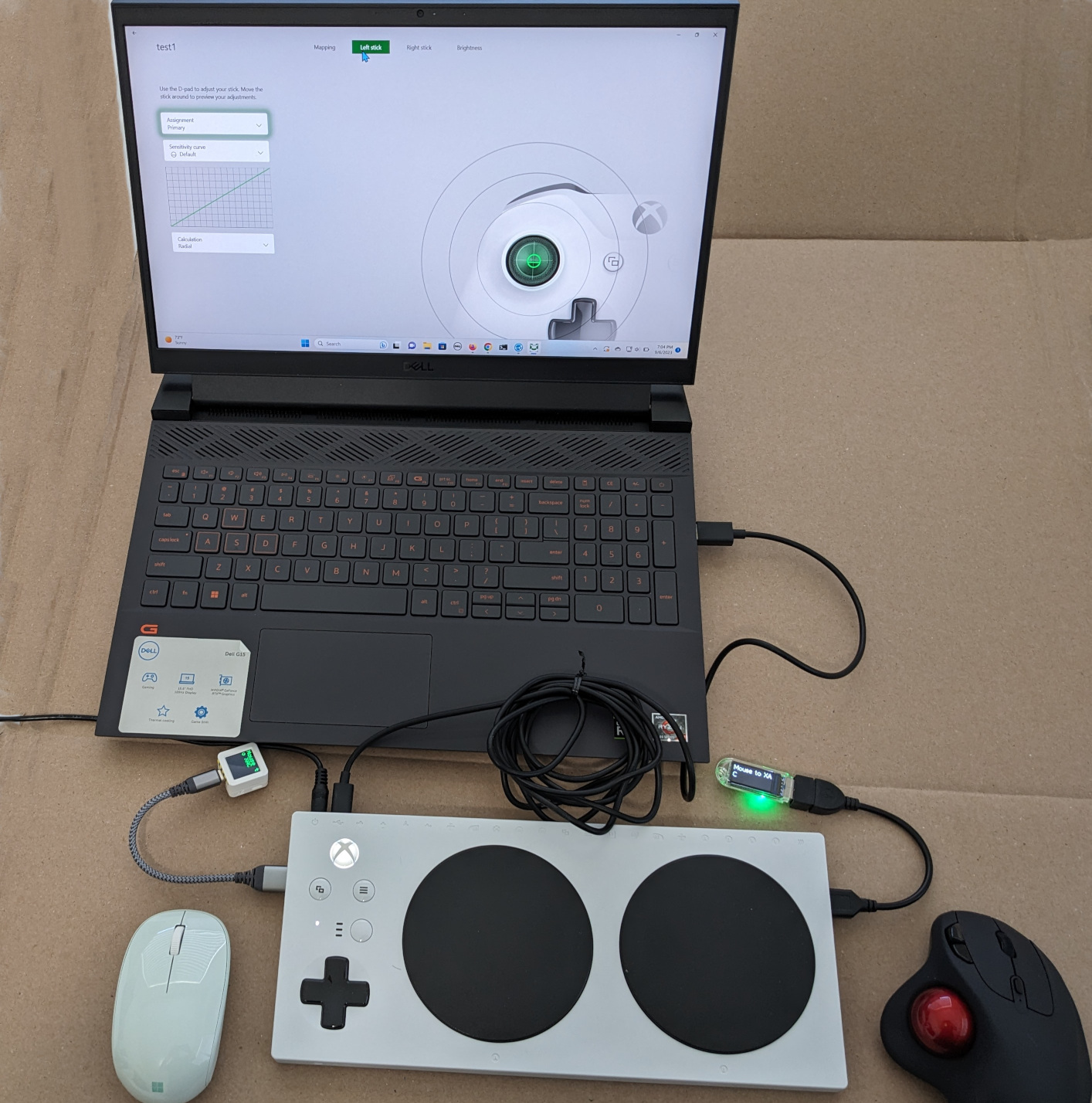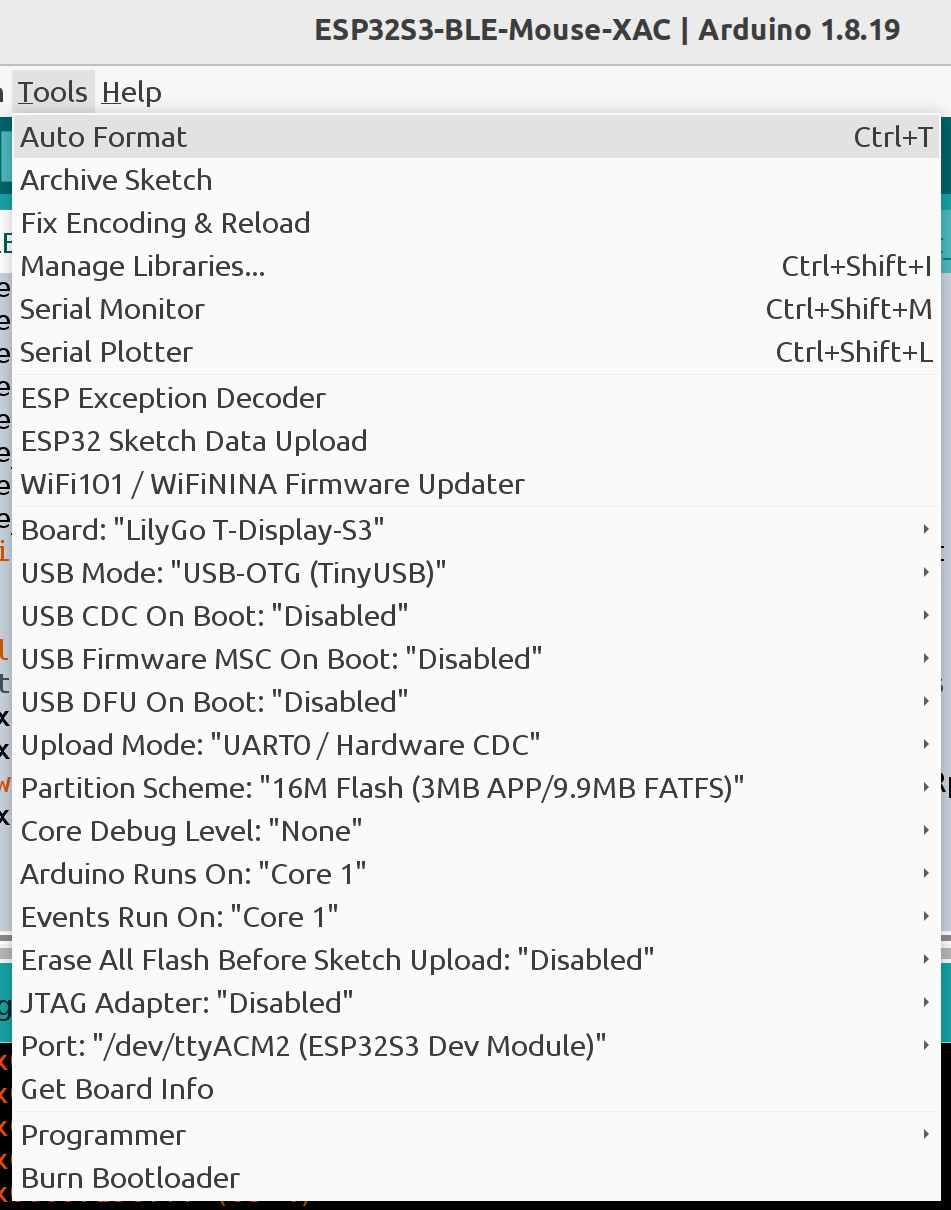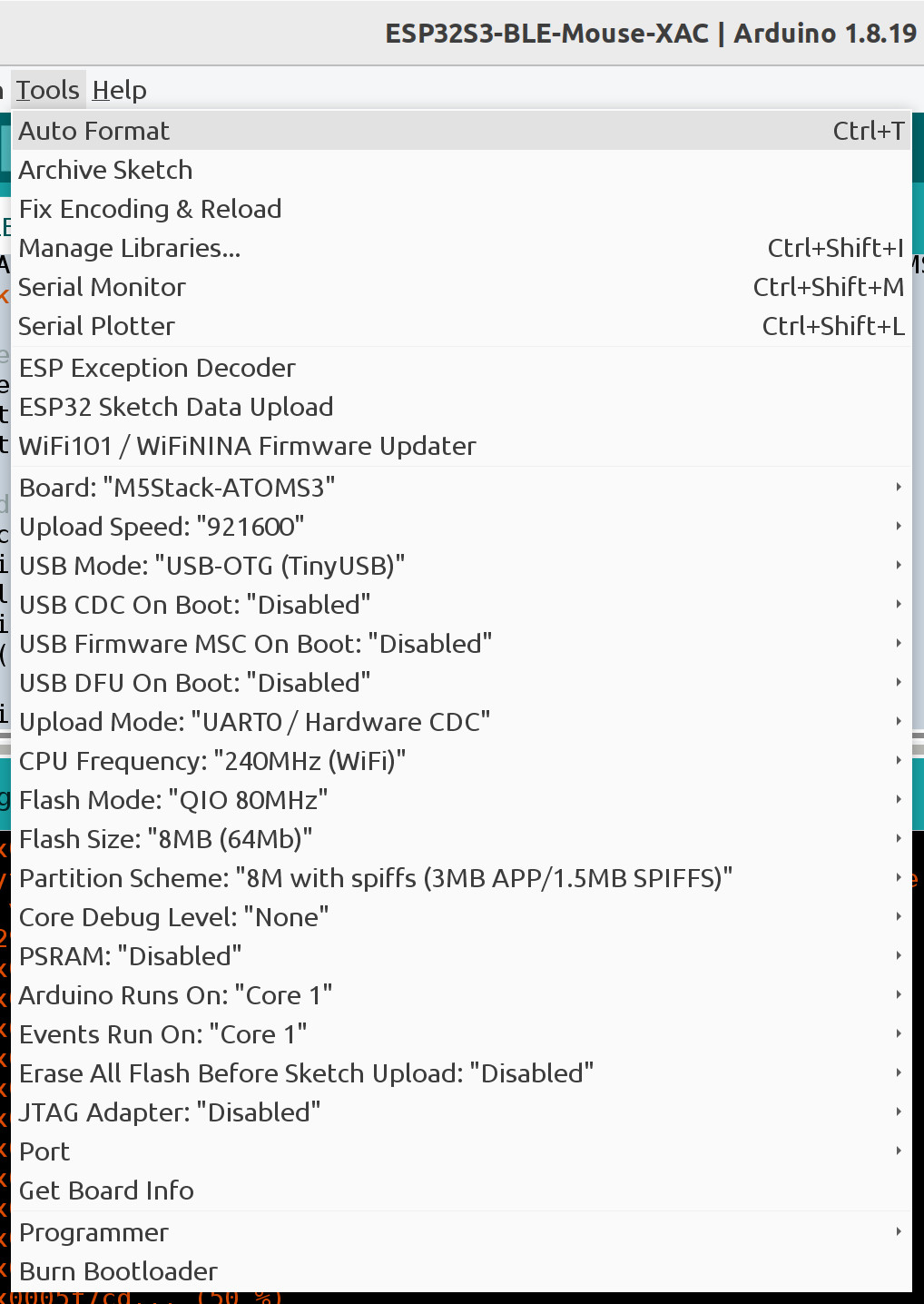The Windows 11 laptop is running the Xbox Accessory app to fine tune the joystick sensitivity (mouse in disguise). On the left side, the small white box is an M5Stack AtomS3 (ESP32-S3 inside). The AtomS3 is communicating with the greenish mouse over BLE. The AtomS3 appears as a USB joystick to the XAC. Also note the black cable running off the left side of the picture. The XAC is powered by a 5V 2A wall adapter. This is needed to power the ESP32-S3 boards.
On the right side, the gadget that looks like a thumb drive with a display is a LilyGo T-Dongle S3 (ESP32-S3 inside). This is running the same firmware as the AtomS3. The T-Dongle communicates over BLE to the thumb trackball mouse.
There is no reason to use two different ESP32-S3 devices. Just one is fine or two of the same type.
The ESP32-S3 draws more than 100 mA but the XAC can only supply 100 mA from its USB joystick ports when used without a power supply.
This device is available with and without a built-in display. Set the IDE board to "LilyGo T-Display-S3". Note this is not strictly correct because the T-Dongle-S3 is used but the T-Display-S3 is close enough. Hopefully, T-Dongle-S3 option will be added soon. Both devices have 16 MB of Flash.
To put the board in upload mode, first unplug or power off the board. Press and hold the button. Plug in or power on the board with the button held down. Release the button. Start uploading
Power cycle the board after the upload is done.
This device is available with and without a built-in display. Set the IDE board to "M5Stack AtomS3". Both boards have 8 MB of Flash. To put the board in upload mode, press and hold the small button on the side for about 2 seconds until a green LED lights up inside. Start uploading.
Power cycle the board after the upload is done.
Install the following libraries using the Arduino IDE library manager.
- "OneButton" by Matthias Hertel
- "FastLED" by Daniel Garcia
- "NimBLE-Arduino" by h2zero
- "M5GFX" by M5Stack
Install the following library by downloading the ZIP file from the following link. Then install using the IDE "Install .ZIP library" option.
If not using the LilyGo board, skip this step. Install the following library for the display by downloading the ZIP file from the following link. Then install using the IDE "Install .ZIP library" option. In addition, copy User_Setup_Select.h to /TFT_eSPI-master. This selects the correct display type for the board.
The Arduino library should include these directories.
ESP32_flight_stick-main
FastLED
M5GFX
NimBLE-Arduino
OneButton
TFT_eSPI-master
Ignore the warning messages about "WM_NOTEMP" and "No hardware SPI pins defined".
Waiting for a BLE mouse or trackball. The first time a mouse/trackball is used, it must be paired. See the device instructions for pairing. It usually is done by holding a button down until an LED starts blinking.
The program is converting mouse/trackball buttons and movement to joystick buttons and movements.
The mouse/trackball will go into a power save mode when idle which disconnects BLE. Pressing a button should wake up the device and reconnect without pairing.
Not all wireless mice and trackballs support BLE. Some use the older Bluetooth Classic protocols. Some use proprietary (not Bluetooth or WiFi) wireless protocols. The ESP32-S3 only works with BLE devices.
"USB CDC On Boot:" "Enabled" #define USB_DEBUG 1
"USB CDC On Boot:" "Disabled" #define USB_DEBUG 0
The mouse2xac project works for USB mice and trackballs.


